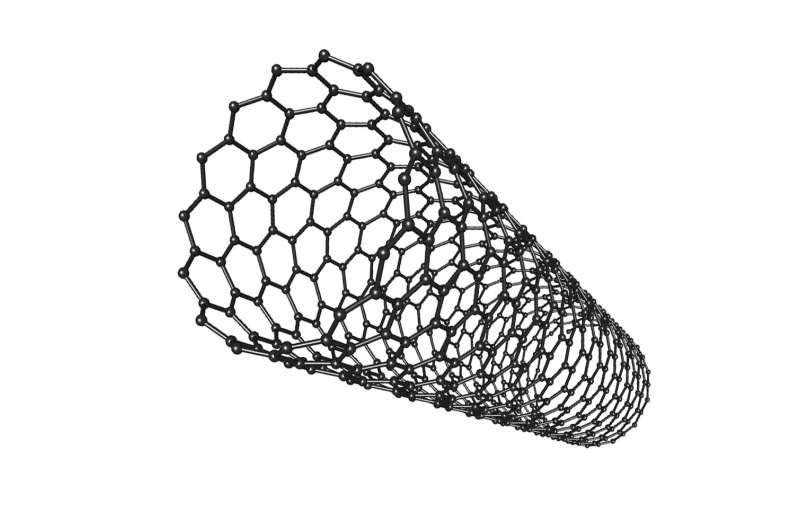Subset of carbon nanotubes poses cancer risk similar to asbestos in mice

Nanotechnology, the science of developing materials containing very small fibers, is having a growing influence on daily life. Now researchers have shown for the first time in mice that long and thin nanomaterials called carbon nanotubes may have the same carcinogenic effect as asbestos: they can induce the formation of mesothelioma. The findings were observed in 10%-25% of the 32 animals included in the study, which has not yet been replicated in humans. The work appears November 6 in Current Biology.
Long carbon nanotubes are a subtype of nanotubes used in the manufacture of incredibly strong, yet lightweight, materials that are increasingly being used in a number of industrial and consumer products, including sports equipment such as helmets and bicycles, aircrafts and sports cars, and computer motherboards.
"Unlike previously reported short-term studies, this is the first time the effects of long and thin carbon nanotubes, leading to mesothelioma, have been monitored in mice over many months," says senior author Marion MacFarlane, a Professor at the Medical Research Council (MRC) Toxicology Unit in Leicester, UK.
"Importantly, not all nanofibers pose a hazard," she adds. "We want our research to inform manufacturers and regulators about safer options when a nanofiber is being selected for the production of nanomaterials for emerging technologies"
"The outcomes seen in this paper will thus help contribute to a 'Safe by Design' approach," says first author Tatyana Chernova, a senior staff scientist at MRC.
In the animal experiments, the investigators placed long carbon nanotubes in the pleura, the area around the lungs where mesothelioma develops in humans. "In that way, we followed changes in the pleura throughout disease development, observing stages of chronic inflammation, activation of pro-oncogenic signaling pathways, and eventually inactivation and/or loss of genes that are the gatekeepers of cancer development," MacFarlane says. The mesothelioma caused by long carbon nanotubes mice was in many ways similar to tumor samples from patients.
The investigators stress that the danger is posed only by types of nanomaterials that are long, thin, and biopersistent—meaning that they are not broken down inside the body: "these long, thin nanotubes are very similar to asbestos in their structural and physical characteristics," MacFarlane says. "The immune system does a good job of recognizing nanotubes that are shorter, thicker, or tangled up. They can be phagocytized by macrophages and cleared out of the body."
Another important set of findings came out of the work: the researchers learned new details about what happens during the very long latency of mesothelioma development and provided new information on the mechanism by which mesothelioma develops. Observations in the mice showed that chronic inflammation caused by long nanotubes led to inactivation of the same genes observed to be disrupted in people with mesothelioma. The researchers found that hypermethylation and silencing of the Cdkn2a locus ultimately led to loss of the tumor suppressor proteins p16 and p19.
"Because mesothelioma is diagnosed when it's quite advanced, we don't know much about the early mechanisms by which it forms," Chernova says. "This research could help us find biomarkers for early detection, as well as provide information for developing targeted therapies for this devastating disease."
More information: Current Biology, Chernova et al. "Long-Fiber Carbon Nanotubes Replicate Asbestos-Induced Mesothelioma with Disruption of the Tumor Suppressor Gene Cdkn2a (Ink4a/Arf)" www.cell.com/current-biology/f … 0960-9822(17)31171-5 , DOI: 10.1016/j.cub.2017.09.007
Journal information: Current Biology
Provided by Cell Press


















